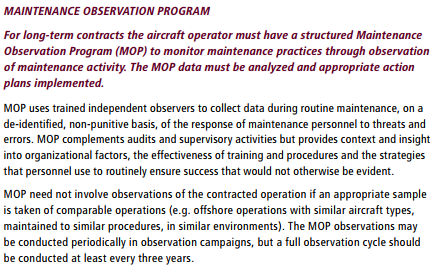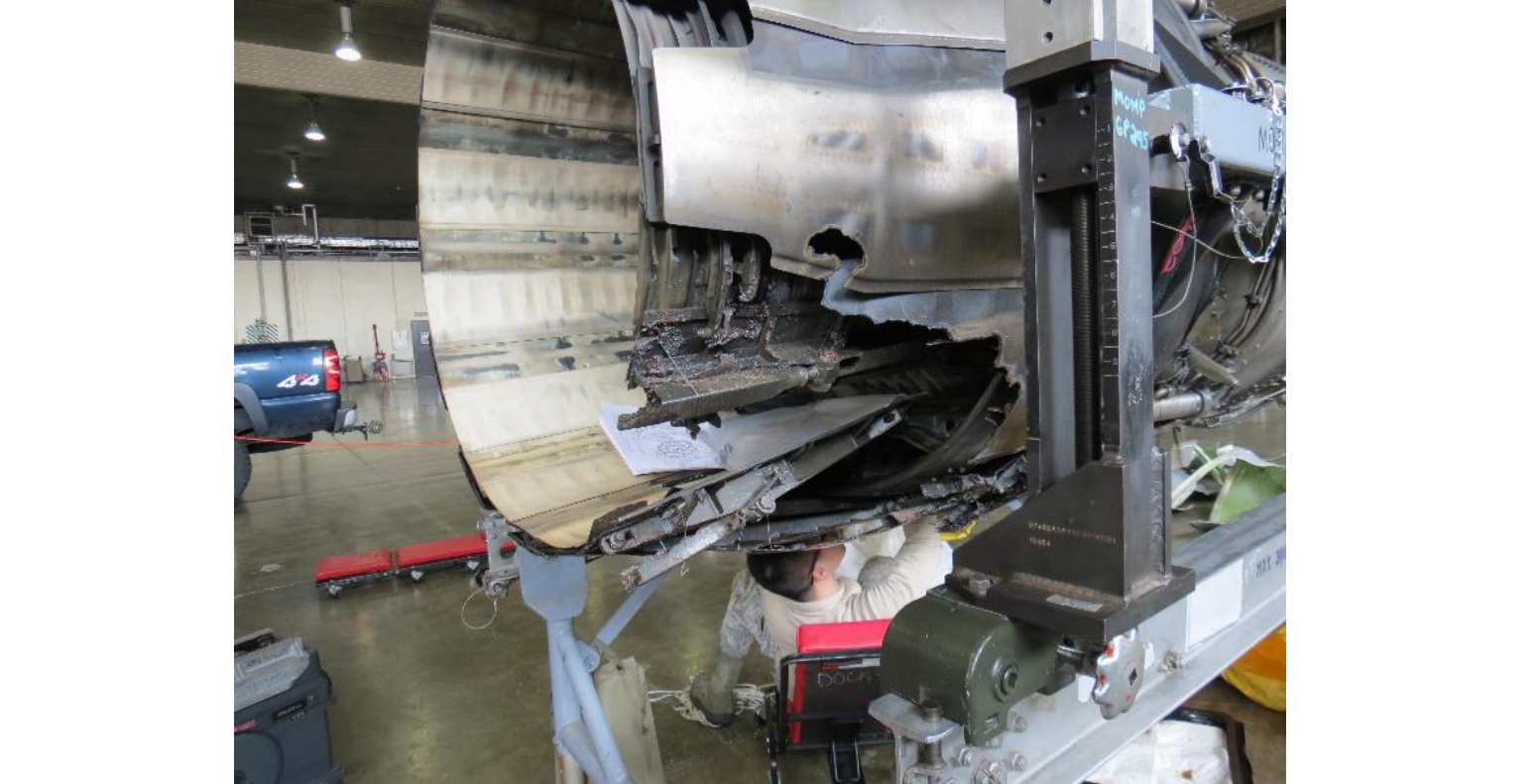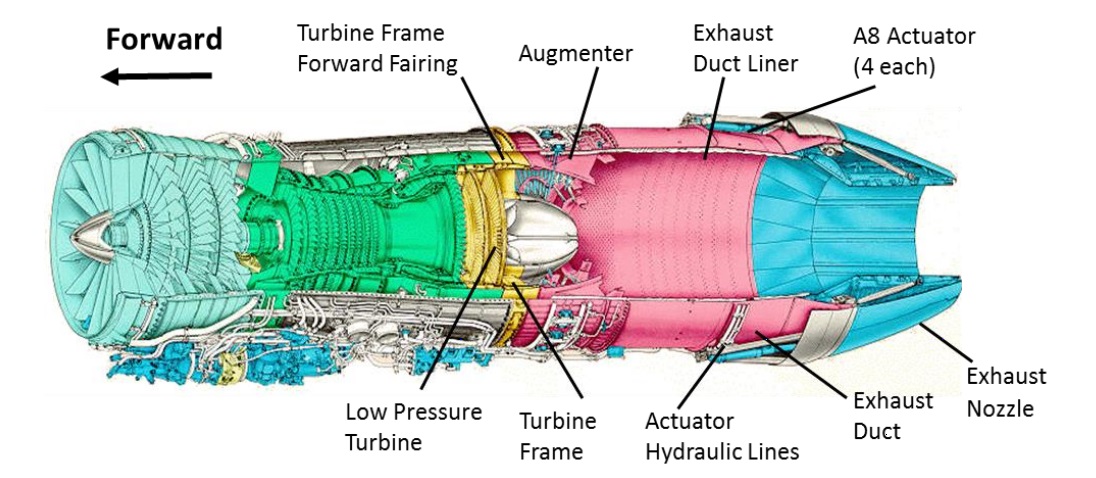USAF Engine Shop in “Disarray” with a “Method of the Madness”: F-16CM Engine Fire
USAF Lockheed Martin F-16CM 92-3883 suffered a General Electric F110-129 engine fire on departure from Misawa Air Base, Japan on 20 February 2018. The resulting USAF Accident Investigation Board (AIB) investigation report describes organisational weaknesses in a USAF engine maintenance facility and the latent defect of an obsolete part incorrectly fitted 6 years earlier.
History of the Flight
The AIB explain that:
The mishap flight (MF) consisted of two F-16CM aircraft. The mishap pilot (MP) departed runway (RWY) 28, fifteen seconds after the mishap lead pilot (MLP). Shortly after the afterburner takeoff, Misawa air traffic controllers informed the MP and the mishap lead pilot (MLP) that the MP had a large flame coming from the aft section of the MP’s aircraft. The MLP also contacted the MP regarding the fire. During the MP’s ascent, he noticed an unexpected decay in his airspeed and climb rate. The MP took a right turn back towards RWY 28, and when unable to maintain airspeed or altitude, the MP jettisoned his stores (external fuel tanks) in accordance with F-16CM critical actions procedures. The two jettisoned fuel tanks landed off-base in Lake Ogawara… The tanks contained approximately 300 gallons each at the time they were jettisoned. The Crash Survivable Flight Data Recorder (CSFDR) indicated the total weight of two tanks with JP-8 was 896 pounds. Following the jettison, the MA regained some airspeed and achieved a better climb rate to get into a position to land. The MP landed on RWY 28, and accomplished the emergency engine shutdown and emergency ground egress critical action procedures. There were no injuries resulting from the mishap.
The engine damage and loss of external fuel tanks resulted in a loss (calculated with absurd precision) of $987,545.57.
The Investigation
The investigation concluded that the cause of the accident was an obsolete turbine frame forward fairing that fractured, causing the engine to ‘overheat’, and resulting in significant damage to parts of the engine. This fairing is made up of three titanium segments that line the forward outer section of the turbine frame.
In 2007 an order had been issued that “dictated replacement across the fleet by August 2010 of this susceptible fairing, along with its attaching hardware” after operators “began experiencing excessive wear, cracking and, in a few cases, failure of the turbine frame forward fairing”. This engine had been fitted with the later standard in 2010, however during a subsequent engine shop visit in 2012:
…maintenance personnel ordered and installed an obsolete part, a turbine frame forward fairing, years after it was replaced by a forward fairing made of stronger material and design. The logistics system then delivered the obsolete forward fairing. Maintenance personnel installed the obsolete forward fairing on the mishap engine (ME) using the updated version of the bracket hardware. The obsolete forward fairing’s weaker material, along with wear from the mismatched [bracket] hardware, ultimately caused the forward fairing to fracture during takeoff. Once fractured, a piece of the forward fairing lifted and blocked the cooling flow of air around the engine, causing the area near the blockage to overheat and catch fire.
Since the obsolete titanium fairings were new at the time of installation, they would have accumulated 760 flying hours on the day of the mishap. The AIB President further found by a preponderance of the evidence that maintenance practices during the 2012-2015 timeframe substantially contributed to the mishap. …routine inspections conducted on the engine would not have revealed that the incorrect forward fairing was installed or that excessive wear was occurring. The only inspection that was required to be conducted that could have caught the excessive wear was the 800-hour borescope inspection. However, the last 800-hour borescope inspection occurred when the forward fairing had only endured 376 flight hours, a point at which the forward fairing was unlikely to show signs of excessive wear.
Engine Maintenance Section 2012-2015
The AIB contend that during this 2012-2015 timeframe, the wing’s Propulsion Flight, Jet Engine Intermediate Maintenance (JEIM) Section had “poor enforcement of standard maintenance protocols”:
This created an environment that tolerated: improper completion of paperwork to ensure parts accountability, severe disorganization at the shop, and the improper handling of parts, including a failure to separate serviceable and unserviceable parts, and failure to follow proper procedures for cannibalization (CANN) actions. Witness testimony and maintenance documentation from [Report of Survey i.e. audit] ROS #15-033 indicates the Propulsion Flight failed to properly document maintenance actions, with one example showing they entered information into a tracking system to indicate a particular Airman removed a part, while also entering information into a separate tracking system indicating that a different Airman removed the same part. This ROS also indicates that a part worth $3K was likely misidentified and turned in for scrap. A second ROS detailing practices from 2013 to 2015 further supports that this Propulsion Flight had a history during 2012 of poor paperwork and accountability as it discussed a search for $322K worth of parts, most of which eventually turned up on aircraft across the world without any documentation to show how it left the Propulsion Flight. This ROS also discussed parts that had likely been misidentified and turned in as scrap, or sent to headquarters for repair or redistribution. In 2015, the propulsion shop was in disarray, as there were no parts shelves, excess parts and boxes were left in the work area, there were old bins of material, and there was “stuff everywhere” without much organization. This deviates from standard protocols since building a motor [sic] takes “details, parts, and room.” It was “mix and match,” with no standardization of where things went. There was no designated area to put a turbine frame. The shop had their own “method of the madness”. Given these departures from standard protocols, the propulsion shop received a half million dollars to revamp the shop, in order to get the shop back up to standards.
According the the wing’s maintenance commander from 2013-2015…
…the shop was known to have disorganized accountability practices where serviceable and non-serviceable parts were stored in the same area. Additionally, protocols regarding cannibalization (CANN), when maintenance personnel could take a serviceable part off one piece of equipment to use on another, were not enforced. This led to CANN procedures in 2012 that were not precise or were happening below the authorized authority level. The documentation for these actions was also not completed properly. Certain flights had little or no supervision involved in their processes. A part that should have been carefully tracked, was likely misidentified and turned in as scrap metal. A similar report, for different parts, found that several parts were removed and installed on other engines without proper documentation or authorization.
The AIB say “procedures have since been corrected and continuously improved” and “supervision and personnel are currently operating within guidelines set forth by the {Air Force Instructions] AFIs, [Technical Orders] TOs, and local procedures”. They note that:
If the obsolete segments had been properly removed from the supply chain, the parts would have been flagged as “not loaded” and the order could not have been placed or would have been automatically replaced with the updated part number. A review of the supply system programs, Enterprise Solutions System (ESS) and Logistics Installation and Mission Support – Enterprise View (LIMS-EV), verified that none of the three obsolete fairing segment part numbers are currently available for issue.
UPDATE 5 February 2019: The Government Accountability Office (GAO) issue a report, ‘Strategy Needed to Improve Retention of Experienced Air Force Aircraft Maintainers’, which says while the USAF reduced the overall gap between the actual and authorised levels of maintainer staff levels from 4,016 in fiscal year 2015, to 745 in fiscal year 2017, in seven of the last eight fiscal years the USAF had staffing gaps of more-experienced maintainers. These are the people needed to train new maintainers. By hiring more novice maintainers the USAF have not addressed the experience gap. The USAF has a round 100,000 maintainers (including Reserves). They also note that “the Air National Guard has had consistent aircraft maintainer staffing gaps from fiscal years 2010 through 2017— ranging from 84 percent to 89 percent of authorized levels filled”.
UPDATE 25 April 2020: Hydraulic failure caused F-16 to crash near March base last year, Air Force says
…improper installation of two hydraulic check valves…resulted in the loss of sufficient hydraulic pressure to control the [F-16]. …an inadequate [flight-control system] overhaul process that lacked an effective procedure to identify improper installation of ISA check valves was a substantially contributing factor.
Our Observations
The AIB do not discuss why, if severe problems were evident in audits, it was not deemed necessary to consider the airworthiness implications for the in-service fleet then, rather than document them after this accident. They also do not identify when the logistics system was modified to remove the obsolete parts. This is also not the first F-16 to be caught by shortcomings in USAF engine facilities (see: USAF F-16C Crash at Joint Base Andrews: Engine Maintenance Error), but the findings from audits in Japan did predate the errors made in the Andrews’ accident.
Flight Safety Foundation BARS Maintenance Observation Program (MOP)
Aerossurance worked with the Flight Safety Foundation (FSF) to create a Maintenance Observation Program (MOP) requirement for their contractible BARSOHO offshore helicopter Safety Performance Requirements to help learning about routine maintenance and then to initiate safety improvements:  Aerossurance can provide practice guidance and specialist support to successfully implement a MOP. As one article, Retired Air Force Four-Star: How to Solve Aviation Crisis has discussed:
Aerossurance can provide practice guidance and specialist support to successfully implement a MOP. As one article, Retired Air Force Four-Star: How to Solve Aviation Crisis has discussed:
…the best solution is for senior officials to keep the door open and have ongoing conversations on potential problems. “It’s not as much oversight as much as it is … going out and talking with [individuals] … just seeing what’s going on…”
Other Safety Resources
- USAF RC-135V Rivet Joint Oxygen Fire: A military accident investigation has paradoxically determined that a $62.4mn fire was due to a maintenance error but that no human factors were involved.
- Production Errors on a SAR Helicopter Full Ice Protection System
- United Airways Suffers from ED (Error Dysfunction)
- Professor James Reason’s 12 Principles of Error Management
- Back to the Future: Error Management
- Safety Performance Listening and Learning – AEROSPACE March 2017
- Maintenance Human Factors: The Next Generation
- Airworthiness Matters: Next Generation Maintenance Human Factors
- Machining Defect Cause of V2500 Failure
- Lost Tool FODs Propeller Blade, Penetrating Turboprop’s Fuselage
- Lufthansa MD-11F Nose Wheel Detached after Maintenance Error
- Helicopter Engine Unapproved Repair Leads to Forced Landing Damage
- Micro FOD: Cessna 208B Grand Caravan Engine Failure & Forced Landing
- B1900D Emergency Landing: Maintenance Standards & Practices
- US HEMS EC135 Dual Engine Failure: 7 July 2018
- Robinson R44 Power Loss: Excessive Lubricant In this case the response when a problem was identified was much faster.
- UPDATE 13 November 2018: Inadequate Maintenance, An Engine Failure and Mishandling: Crash of a USAF WC-130H
- UPDATE 18 December 2018: USAF Engine Shop in “Disarray” with a “Method of the Madness”: F-16CM Engine Fire
- UPDATE 27 December 2018: Inadequate Maintenance at a USAF Depot Featured in Fatal USMC KC-130T Accident
- UPDATE 26 January 2019: MC-12W Loss of Control Orbiting Over Afghanistan: Lessons in Training and Urgent Operational Requirements
- UPDATE 9 February 2019: Meeting Your Waterloo: Competence Assessment and Remembering the Lessons of Past Accidents: No one was injured in this low speed derailment in London after signal maintenance errors but investigators expressed concern that the lessons about maintenance errors from the fatal triple collision at Clapham in 1988 may have been forgotten.
- UPDATE 30 March 2019: Contaminated Oxygen on ‘Air Force One’ Poor standards at a Boeing maintenance facility resulted in contamination of two oxygen systems on a USAF Presidential VC-25 (B747).
- UPDATE 30 October 2019: ‘Crazy’ KC-10 Boom Loss: Informal Maintenance Shift Handovers and Skipped Tasks
- UPDATE 8 April 2020: NTSB Confirms United Airlines Maintenance Error After 12 Years
- UPDATE 6 May 2020: CFM56-7 HPC Titanium Fire Due to VSV Maintenance Assembly Error (United Boeing 737-924)
- UPDATE 30 June 2020: 17 Year Old FOD and a TA-4K Ejection
- UPDATE 22 July 2020: NDI Process Failures Preceded B777 PW4077 Engine FBO
- UPDATE 10 November 2020: King Air 100 Uncontained TPE331-6 Failure – Inappropriate Repair Scheme
- UPDATE 3 February 2021: Engine Shutdown Results in Revised SOV Rigging Instructions
- UPDATE 19 February 2021: Flybe Fume Event (Part 1): Compressor Wash Maintenance Human Factors Case Study
Aerossurance is pleased to be both sponsoring and presenting at a Royal Aeronautical Society (RAeS) Human Factors Group: Engineering seminar Maintenance Error: Are we learning? to be held on 9 May 2019 at Cranfield University.





Recent Comments